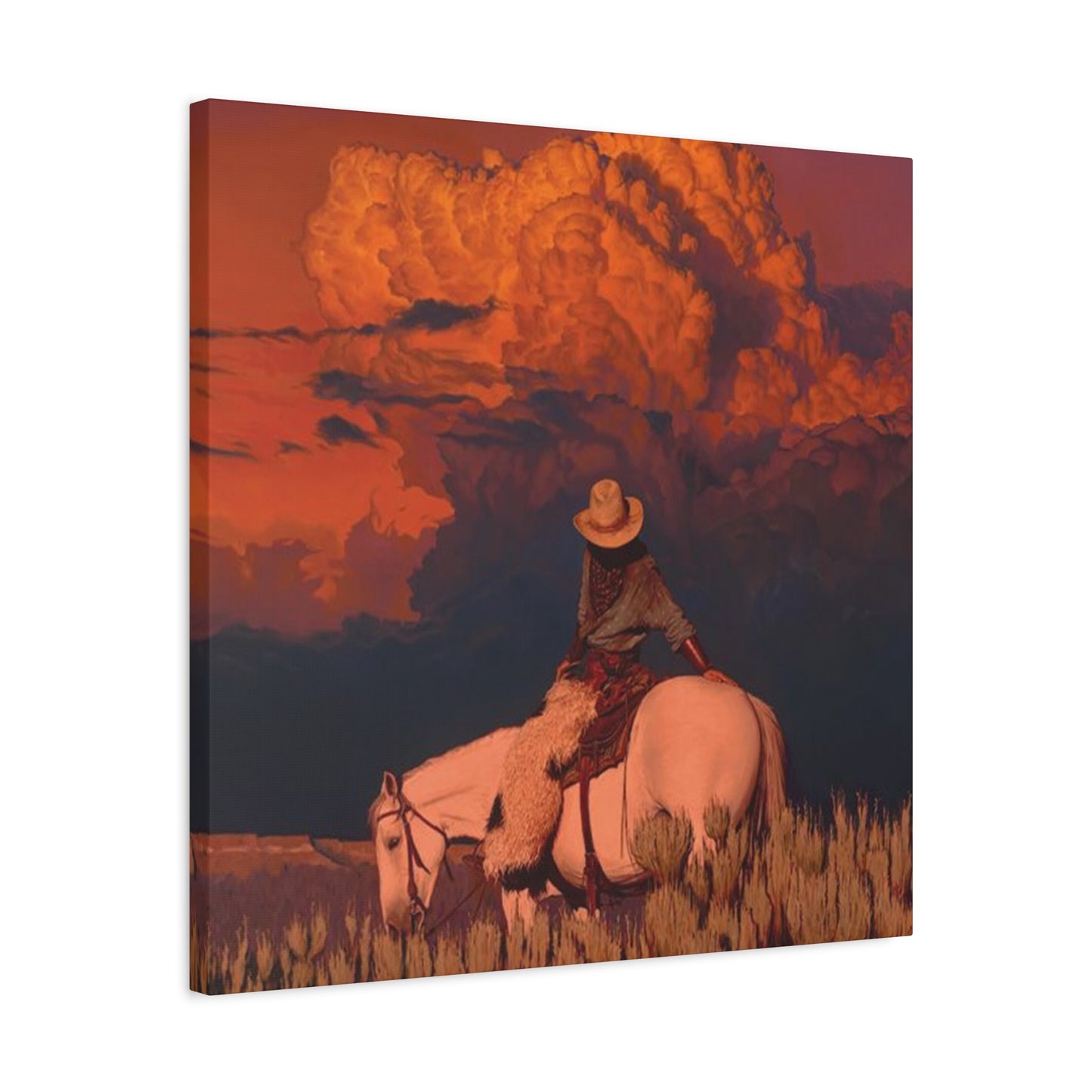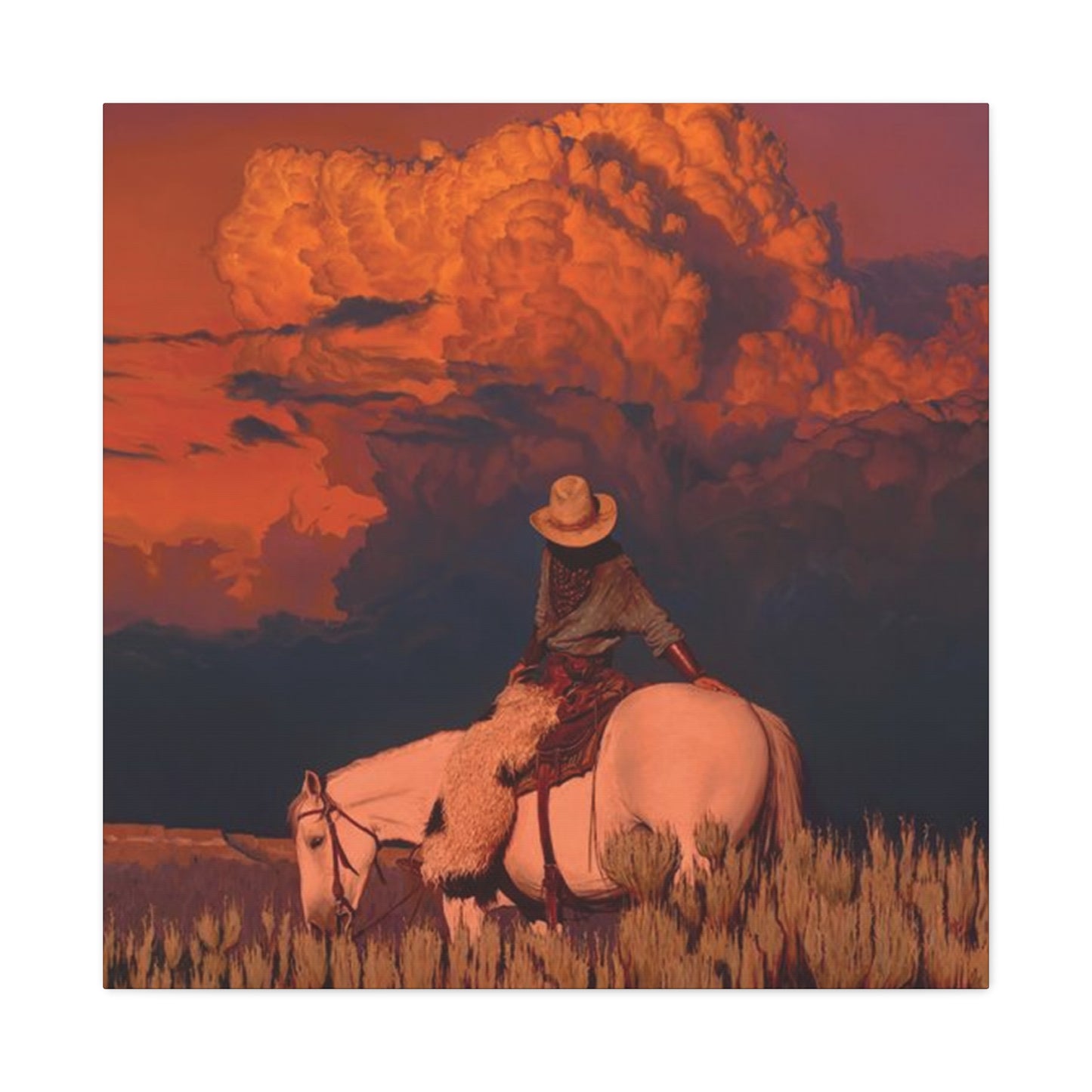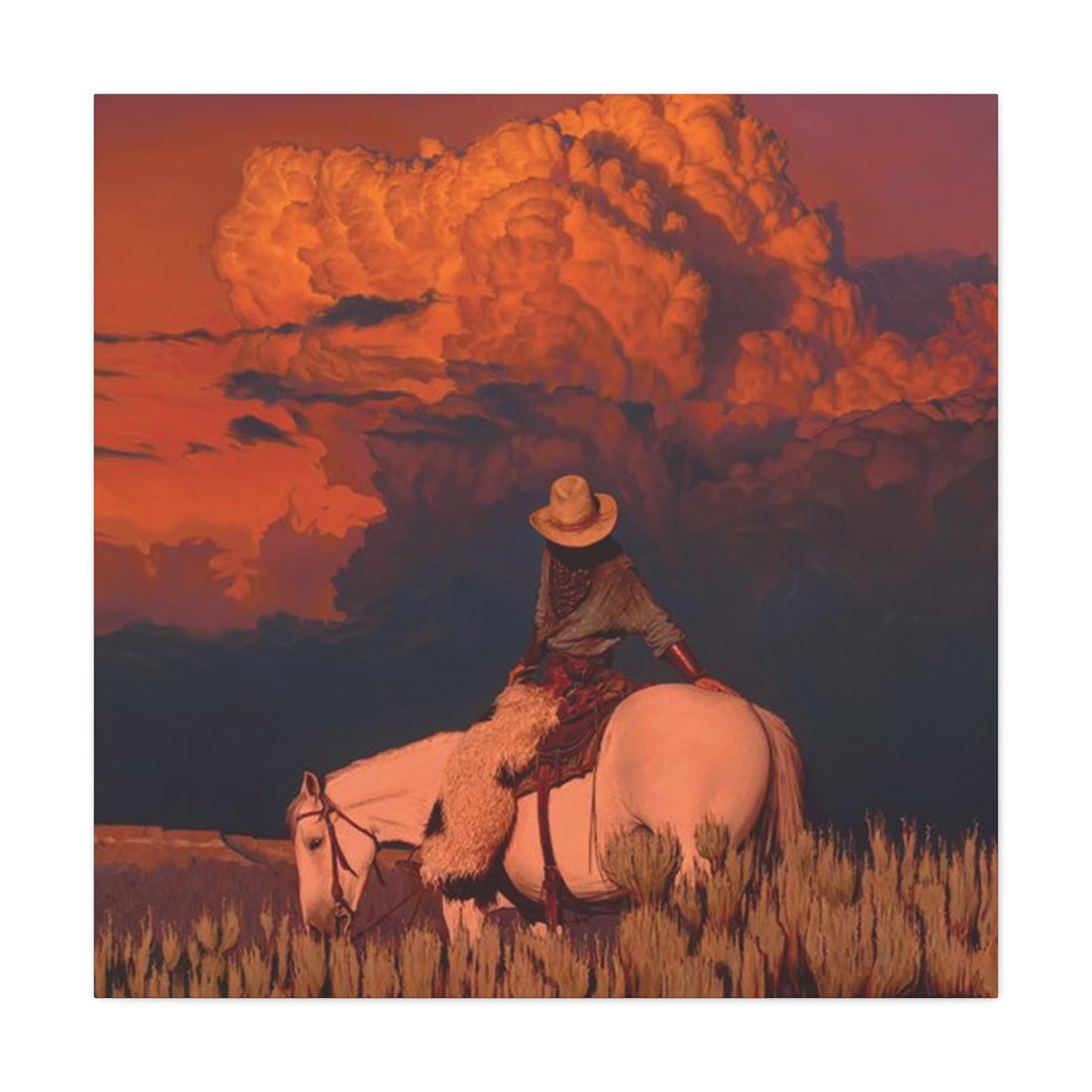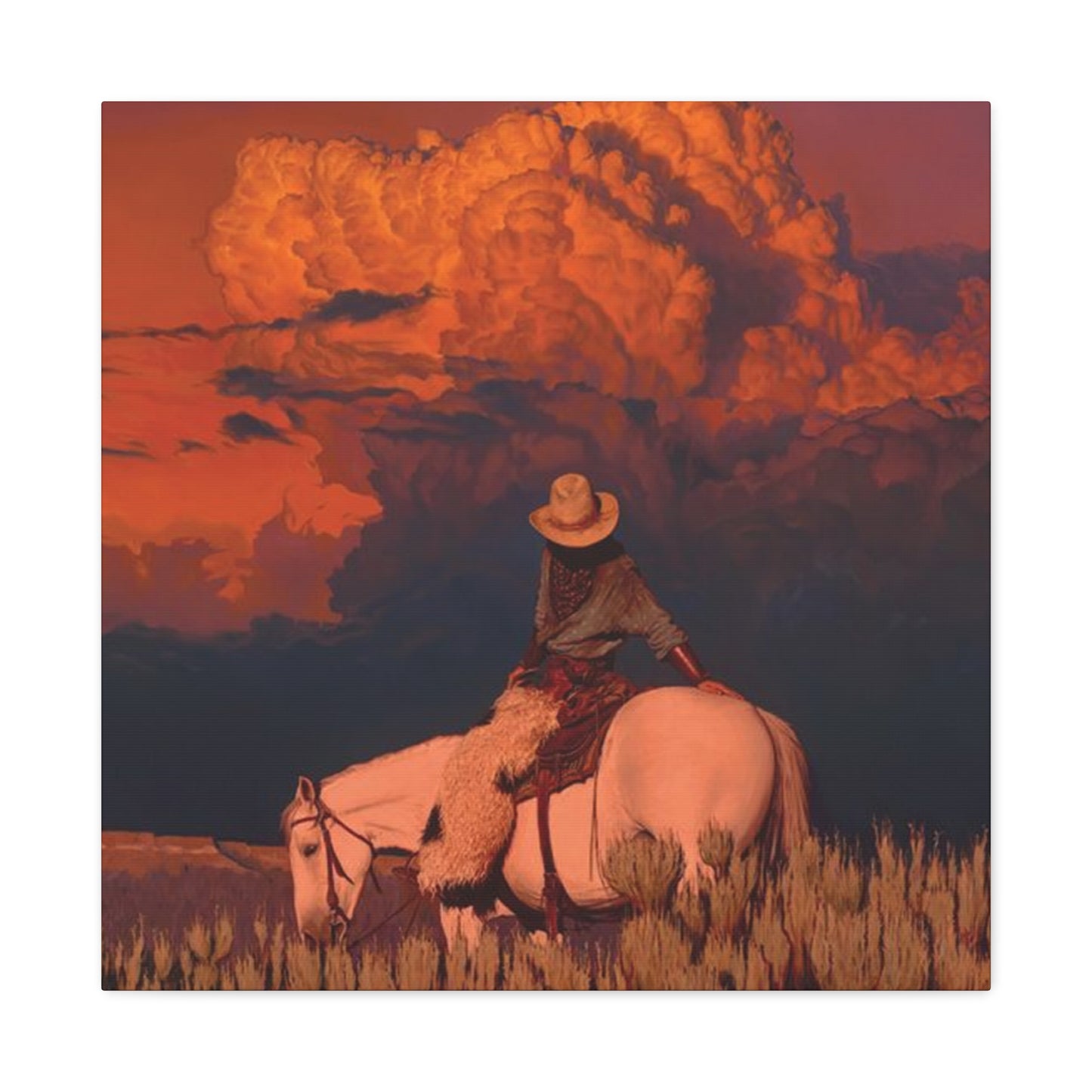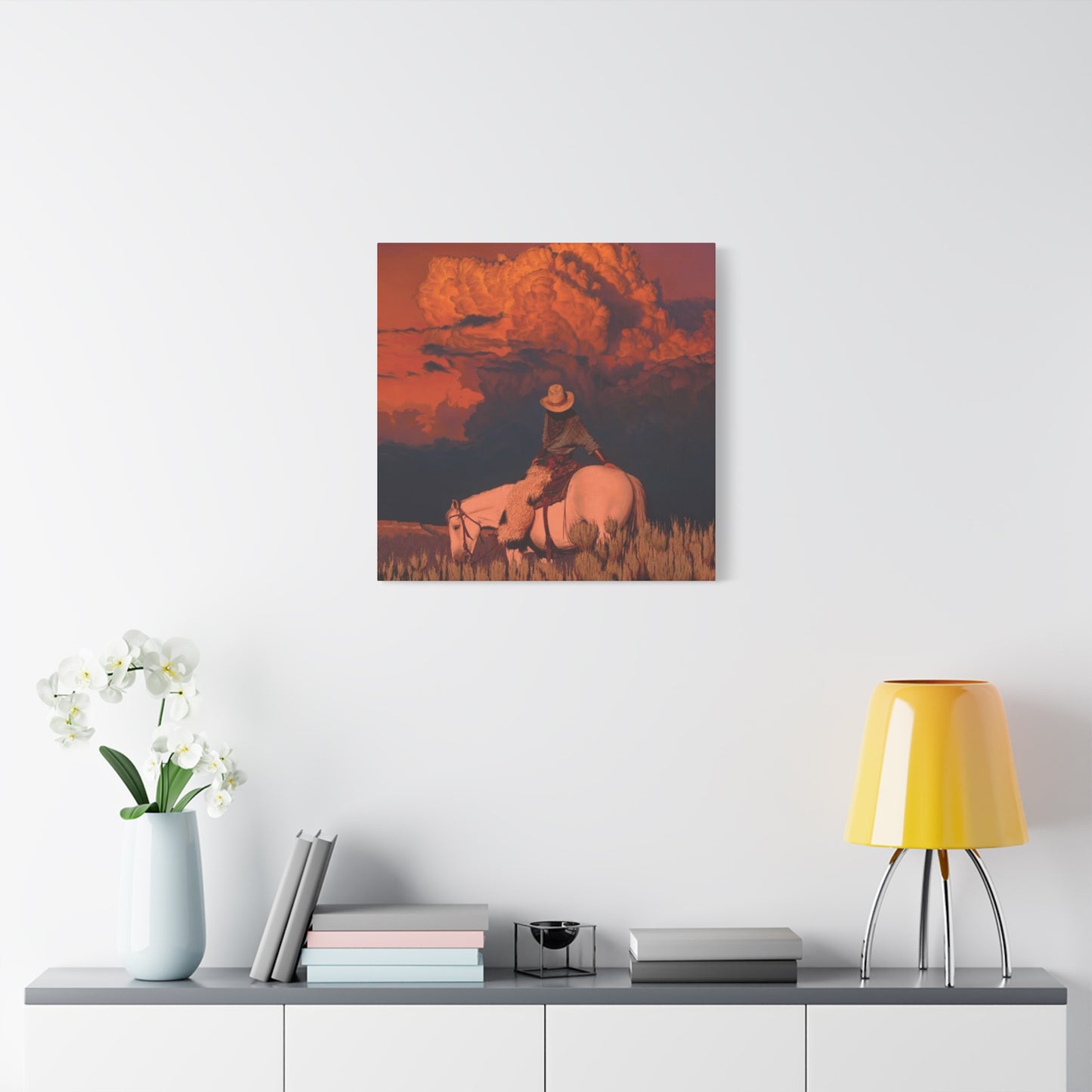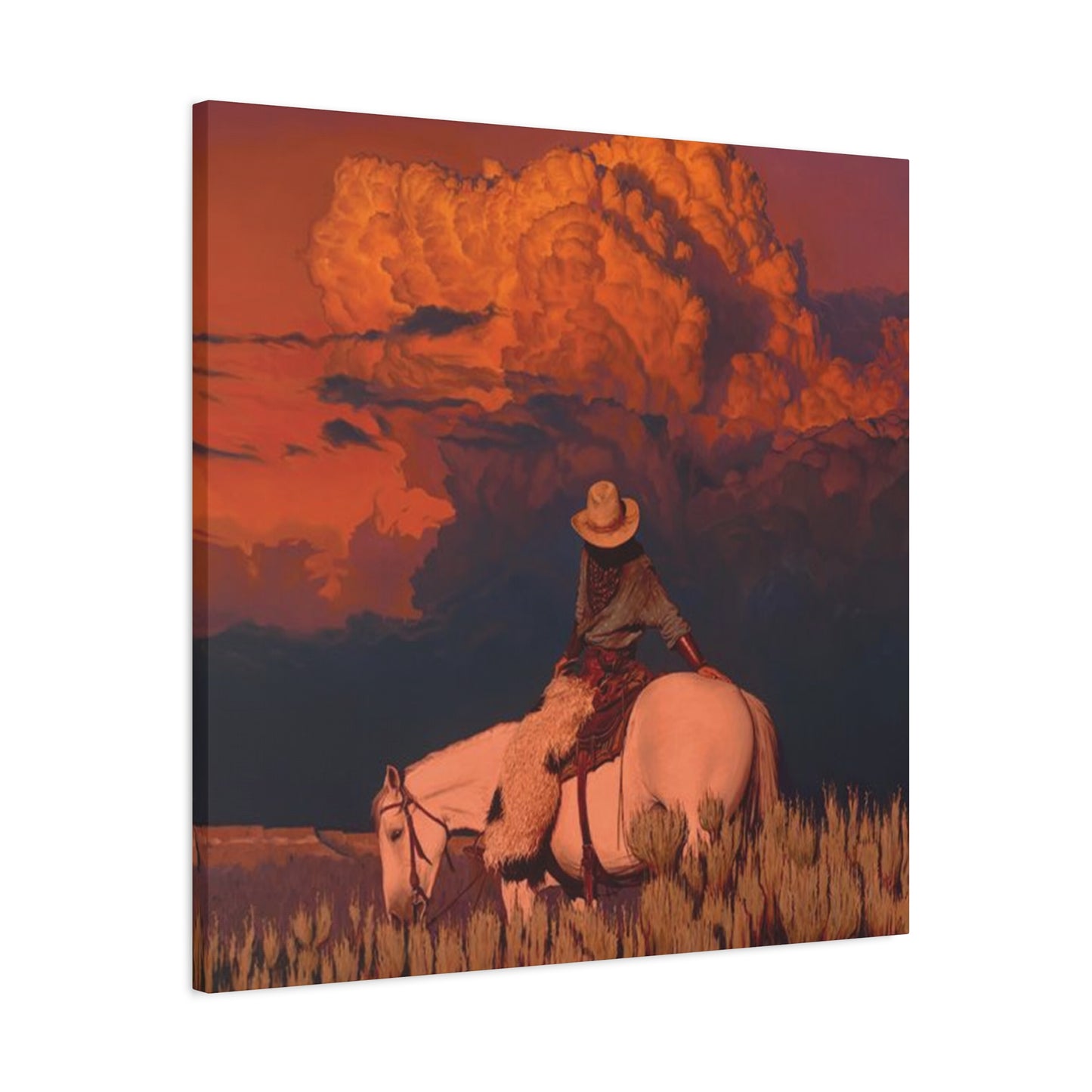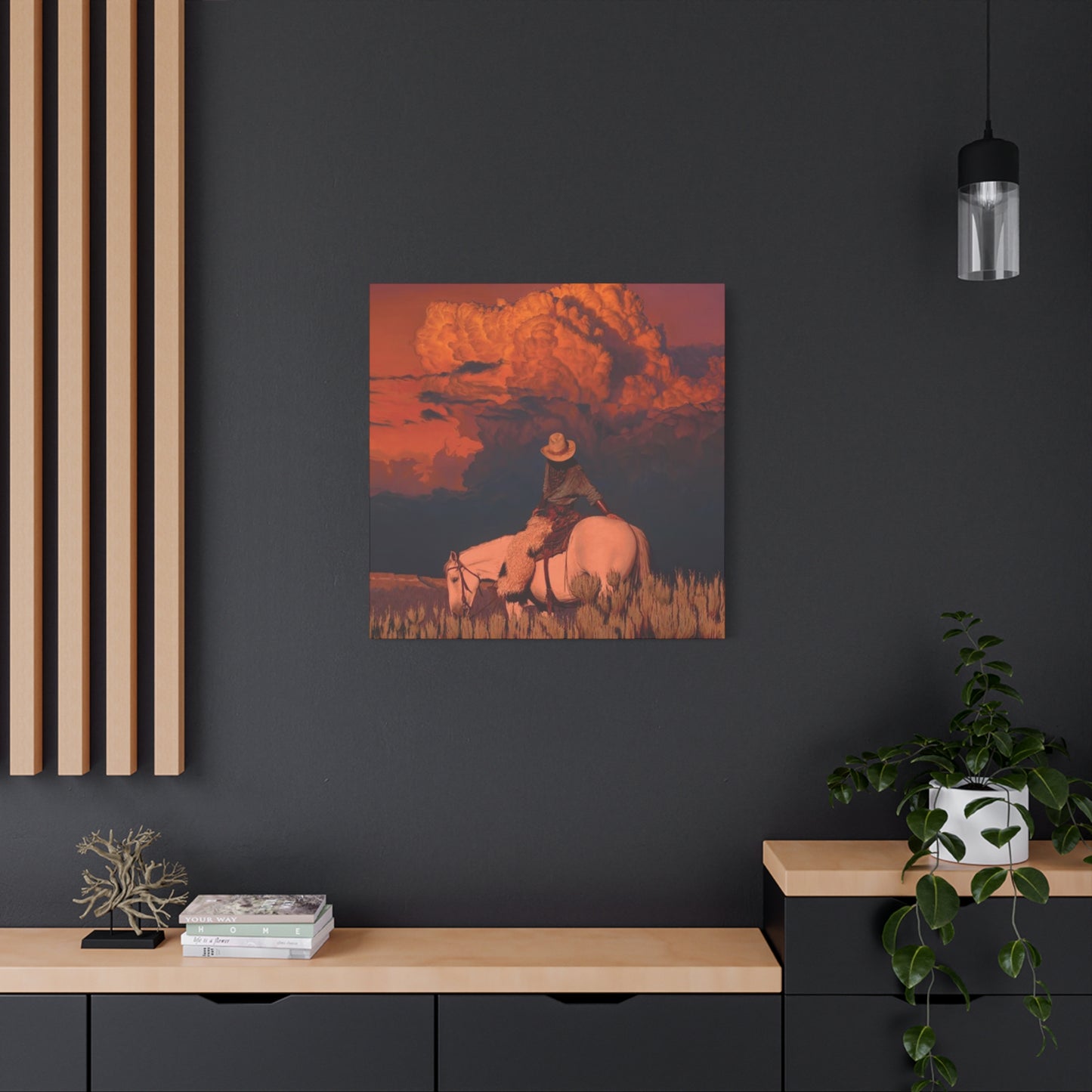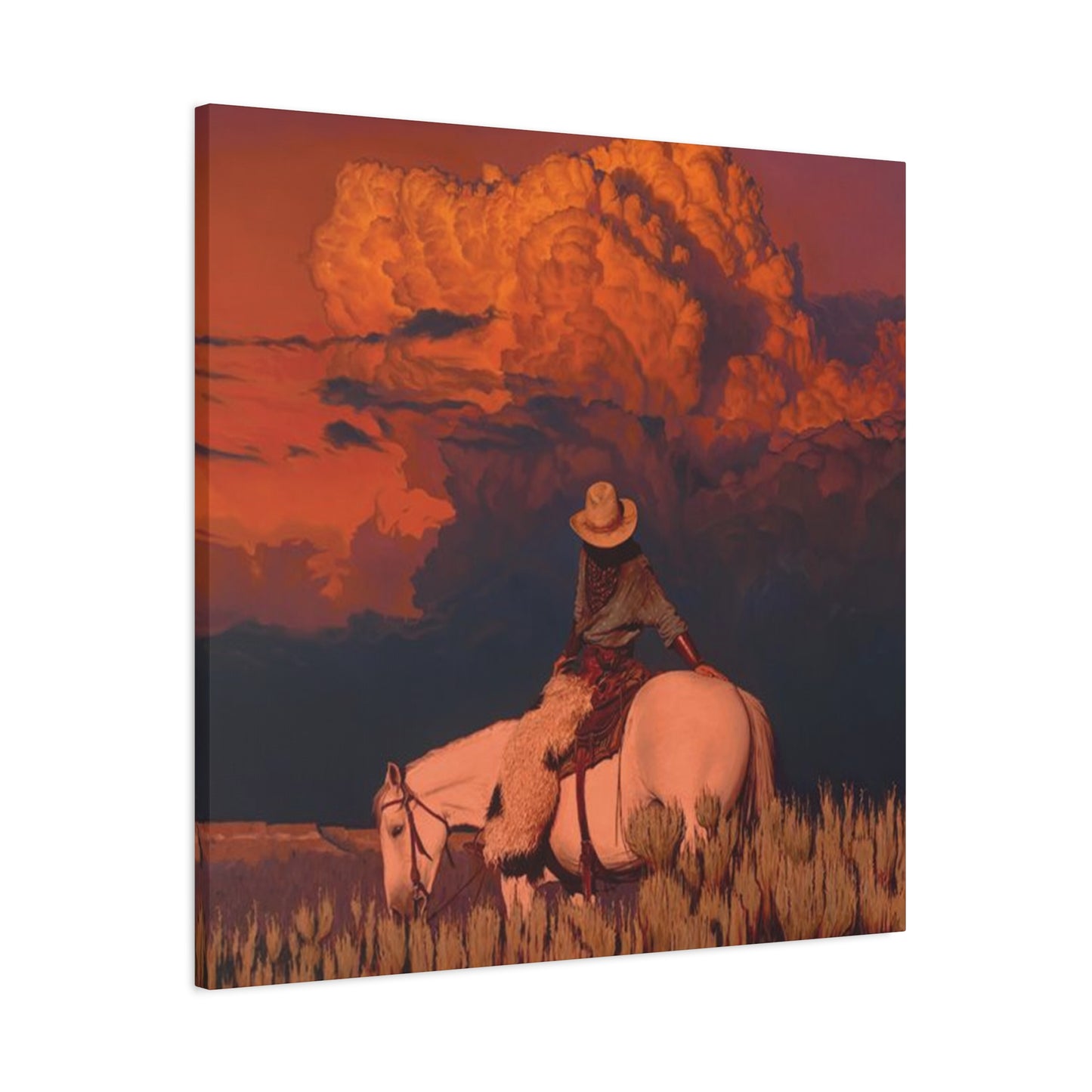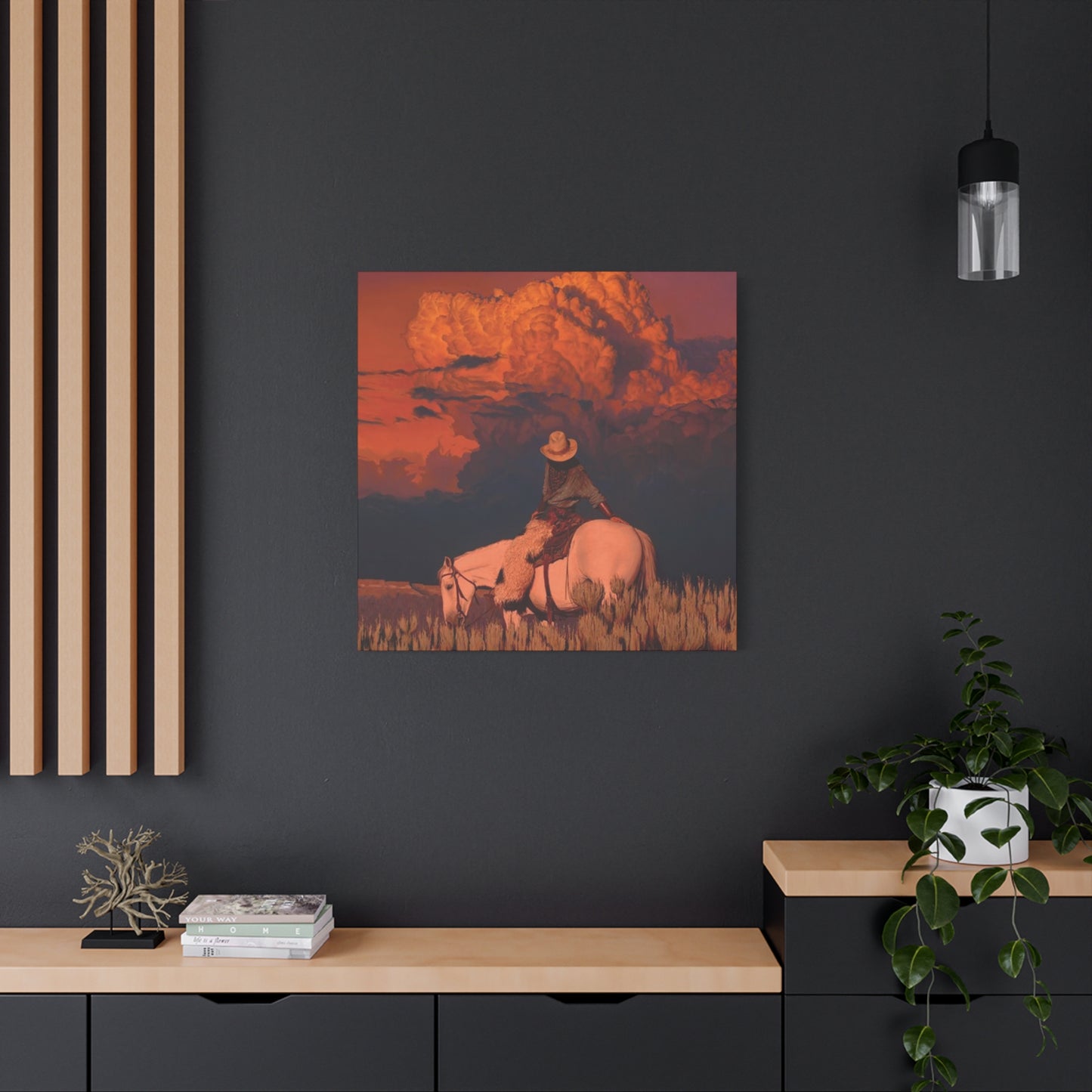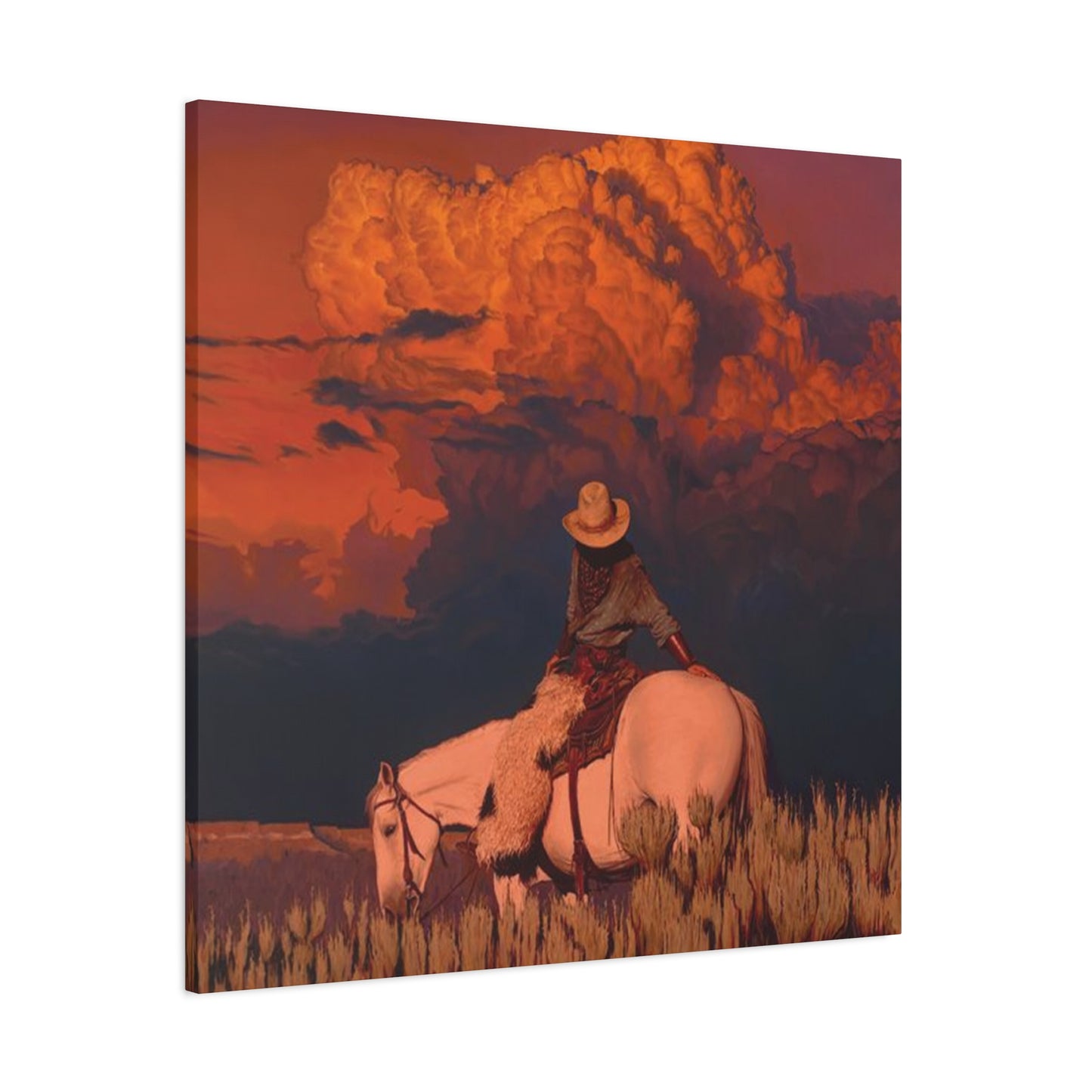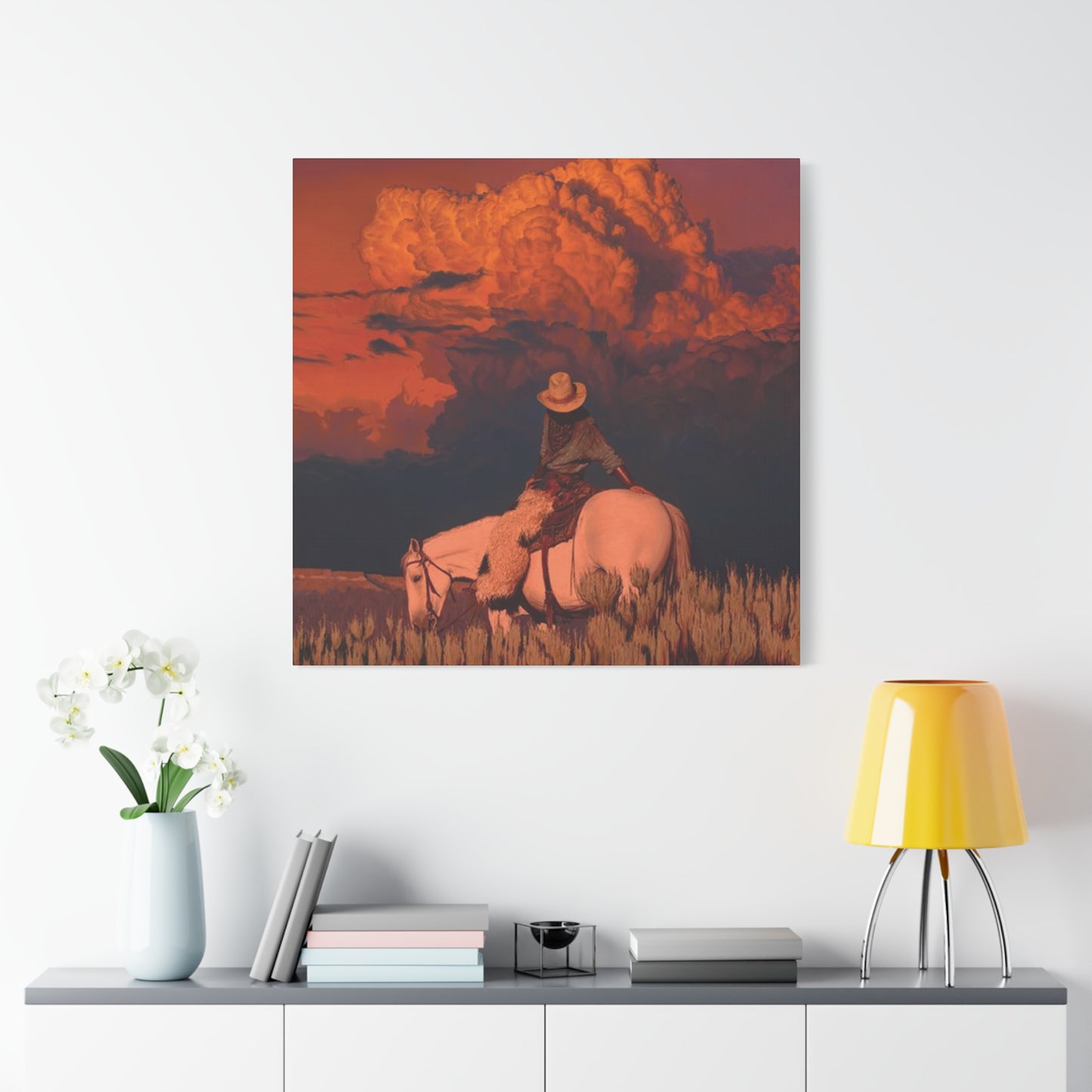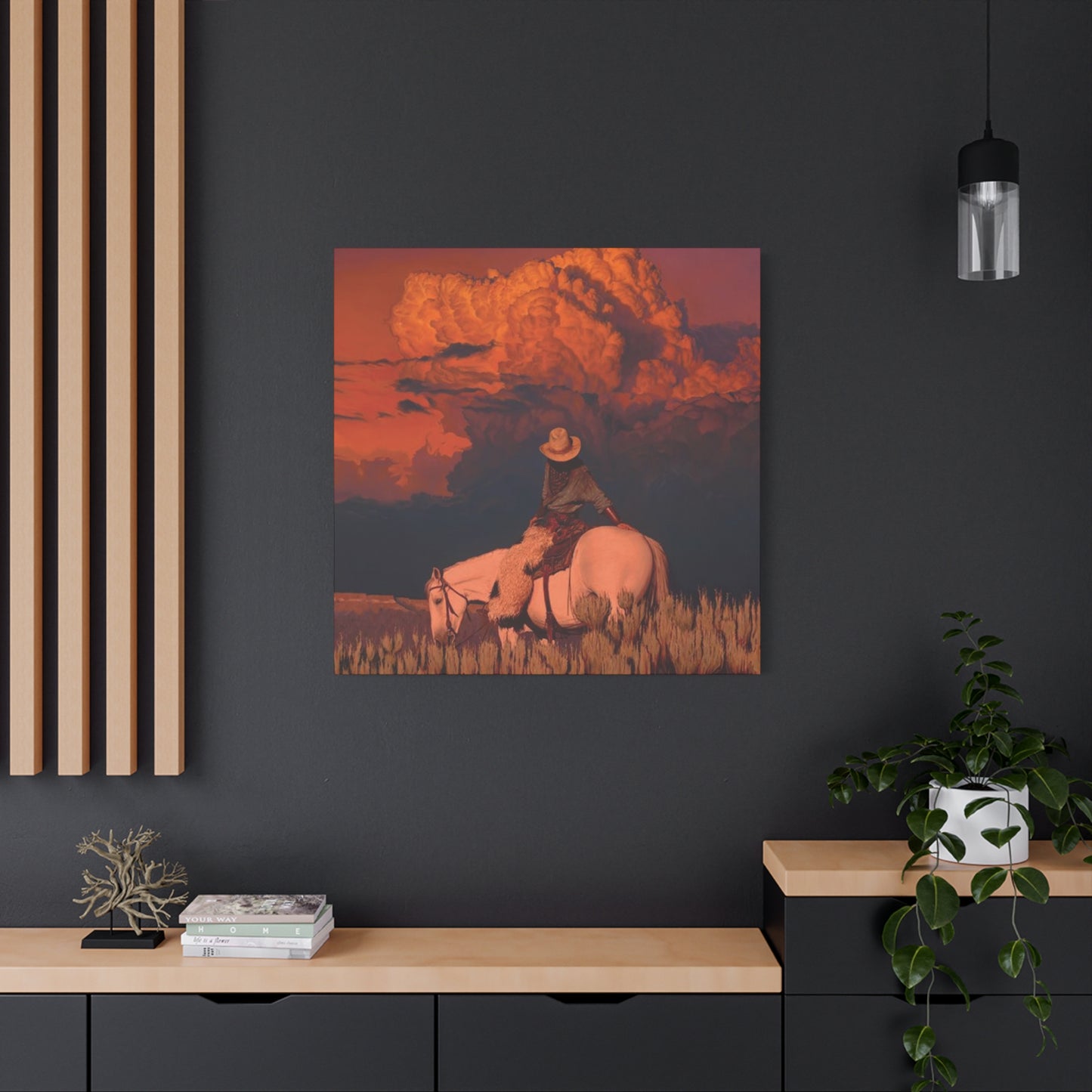Cowgirls In Sunset Wall Art & Canvas Prints
Cowgirls In Sunset Wall Art & Canvas Prints
Couldn't load pickup availability
Discovering the Rustic Beauty of Cowgirls In Sunset Wall Art for Your Western-Inspired Living Spaces
The enchanting world of western décor has witnessed a remarkable surge in popularity, with one particular artistic theme capturing the hearts of interior design enthusiasts everywhere. The imagery of cowgirls silhouetted against breathtaking sunset horizons represents more than mere decoration—it embodies a powerful narrative of independence, natural beauty, and the timeless spirit of the American frontier. This distinctive form of visual expression has become increasingly sought after by homeowners, collectors, and design professionals who recognize its ability to transform ordinary rooms into spaces filled with character and emotional resonance.
The Captivating Allure Behind Western-Themed Artistic Expressions in Contemporary Home Décor
Western-inspired artwork has experienced a renaissance in modern interior design circles, moving far beyond its traditional boundaries. The representation of cowgirls set against magnificent sunset backdrops speaks to something profound within our collective consciousness—a yearning for simpler times, connection with nature, and appreciation for the rugged determination that defined an era. These visual compositions carry multifaceted meanings that resonate across generations, making them versatile choices for various living environments.
The aesthetic appeal of such artwork stems from its masterful combination of several compelling elements. The silhouette of a female figure, often positioned near horses or within expansive landscape settings, creates an immediate focal point that draws the eye and stimulates imagination. The warm, glowing hues associated with sunset scenes—ranging from deep oranges and fiery reds to soft purples and golden yellows—infuse spaces with natural warmth and visual comfort. This chromatic palette possesses an inherent ability to make rooms feel more inviting and emotionally engaging.
Beyond surface-level attractiveness, these artistic pieces communicate powerful themes of empowerment, resilience, and harmony with the natural world. The cowgirl figure has evolved into a symbol representing feminine strength, self-reliance, and adventurous spirit—qualities that continue to inspire contemporary audiences. When combined with the transitional beauty of sunset moments, the imagery suggests reflection, peace, and the eternal cycle of endings and new beginnings.
Exploring Different Artistic Styles and Medium Variations for Western Sunset Imagery
The marketplace offers an extraordinary diversity of artistic interpretations and production methods for western-themed sunset artwork. Understanding these variations empowers buyers to make informed decisions that align with their aesthetic preferences, budgetary considerations, and spatial requirements.
Photographic representations capture authentic moments with remarkable clarity and detail. Professional photographers specializing in western landscapes often venture to remote locations during golden hour, patiently waiting for that perfect convergence of light, subject, and atmospheric conditions. These photographs preserve genuine moments, offering viewers a window into real experiences and actual places. The authenticity inherent in photographic works appeals to those who value documentary-style artistry and connection with actual environments.
Painted interpretations, whether executed traditionally with brushes and pigments or digitally using sophisticated software, provide artists with greater creative freedom. Oil paintings bring depth and texture through layered applications of paint, creating surfaces that catch light in dynamic ways. Acrylic renditions offer vibrant color saturation and faster drying times, allowing for bold expressions and clean lines. Watercolor treatments produce ethereal, dreamlike qualities with their translucent washes and fluid transitions between hues.
Digital illustration has emerged as a significant force in contemporary artistic production. Artists wielding tablets and styluses can manipulate colors, textures, and compositions with unprecedented precision and flexibility. This medium enables the creation of stylized interpretations ranging from hyperrealistic renderings to abstract representations that emphasize emotional impact over literal accuracy.
Mixed media approaches combine multiple techniques and materials within single compositions, resulting in layered, complex visual experiences. An artist might begin with a photographic foundation, then overlay painted elements, incorporate textural materials, or add metallic accents that shimmer when light conditions change throughout the day.
The substrate upon which artwork appears significantly influences its presentation and longevity. Traditional canvas stretched over wooden frames remains popular for its classic appearance and proven durability. Metal prints offer contemporary sophistication with their smooth surfaces and inherent structural stability. Acrylic mountings create depth through transparent layering, making colors appear more luminous and saturated. Wood panel prints provide rustic charm that complements western themes while offering substantial weight and presence.
Strategic Placement Principles for Maximizing Visual Impact Throughout Your Home
The effectiveness of Cowgirls In Sunset Wall Art depends substantially upon thoughtful positioning within residential or commercial spaces. Strategic placement considers multiple factors including viewing angles, lighting conditions, surrounding décor elements, and the psychological effects different rooms exert on occupants.
Living areas serve as primary gathering spaces where families congregate and guests receive welcome. Positioning substantial western sunset artwork above seating arrangements creates a natural focal point that anchors the room's design scheme. The warm tones inherent in sunset imagery complement various color palettes while introducing visual warmth that makes spaces feel more inviting. When selecting pieces for these communal zones, scale matters considerably—undersized artwork fails to command appropriate attention, while oversized pieces can overwhelm smaller rooms.
Bedroom environments benefit from the calming, contemplative qualities sunset imagery naturally provides. The transitional nature of dusk scenes promotes relaxation and mental unwinding, making them psychologically appropriate for spaces dedicated to rest and rejuvenation. Positioning such artwork where it's visible upon waking can set positive intentions for the day ahead, while evening visibility supports the transition toward sleep states.
Home offices and personal workspaces gain character and inspiration from western-themed artwork. The symbolic associations with determination, independence, and expansive horizons can serve as visual reminders of personal goals and aspirations. Many remote workers report that surrounding themselves with meaningful imagery helps maintain motivation during extended work sessions and combats the isolation that sometimes accompanies home-based careers.
Dining areas present opportunities for conversation-starting artwork that reflects household personality and values. The social nature of meals makes these spaces ideal for displaying pieces with narrative content or symbolic significance. Western sunset scenes often spark discussions about travel experiences, nature appreciation, or family heritage connected to rural lifestyles.
Hallways and transitional spaces frequently suffer from neglect in decorating schemes, yet they offer valuable opportunities for creating visual interest. Gallery-style arrangements featuring multiple coordinated pieces can transform these utilitarian passages into curated experiences. Varying sizes and frame styles while maintaining thematic consistency creates dynamic visual flow that guides movement through the home.
Lighting conditions dramatically affect how artwork appears and how effectively it fulfills its decorative purpose. Natural illumination changes throughout the day, causing colors and details to appear differently as direct sunlight, diffused daylight, or twilight conditions prevail. Western sunset imagery particularly benefits from warm artificial lighting that mimics the golden hour glow depicted in the scenes themselves. Adjustable fixtures allow customization based on time of day and desired ambiance.
Color Coordination Strategies for Creating Harmonious Interior Design Schemes
Successfully incorporating western sunset artwork requires understanding color theory principles and how warm, earth-based palettes interact with existing décor elements. The dominant hues in sunset-themed pieces—oranges, reds, yellows, purples, and browns—create specific atmospheric effects that can either enhance or clash with surrounding colors.
Complementary color approaches pair warm sunset tones with cooler blues and greens, creating dynamic contrast that makes artwork pop visually. Turquoise accents, common in southwestern design traditions, form natural partnerships with orange and rust tones. Navy blues provide sophisticated counterpoints to golden yellows, while sage greens soften the intensity of red-orange combinations.
Analogous color schemes utilize adjacent hues on the color wheel, creating harmonious transitions that feel naturally cohesive. Rooms featuring browns, tans, and beiges provide neutral foundations that allow sunset artwork to shine without competing visual noise. Layering various shades within the warm spectrum—from pale peachy tones to deep burgundies—builds depth and complexity while maintaining overall unity.
Monochromatic approaches focus on varying intensities and saturations of single color families. A room designed around earth tones in multiple values creates a serene, sophisticated environment where western artwork feels perfectly integrated rather than imposed. This strategy works particularly well in minimalist or contemporary settings where restraint and intentionality guide design decisions.
Accent color strategies involve selecting less prominent hues from artwork and amplifying them through textiles, accessories, or architectural features. If a sunset piece includes hints of lavender in distant mountains or pink in clouds, introducing those colors through throw pillows, curtains, or decorative objects creates subtle connections that tie the space together cohesively.
Material choices in furnishings and finishes significantly influence how artwork integrates within spaces. Natural materials like leather, wood, stone, and woven textiles complement western themes through their inherent connection to rural, outdoor lifestyles. Distressed or weathered finishes on furniture pieces echo the rustic character often depicted in cowgirl imagery, while polished metals in bronze, copper, or oil-rubbed finishes provide sophisticated accents that bridge rustic and refined aesthetics.
Understanding Symbolism and Cultural Significance Within Western Cowgirl Imagery
The visual motif of cowgirls against sunset horizons carries layered meanings that extend far beyond simple decoration. Engaging with these deeper significances enriches the ownership experience and allows artwork to serve as meaningful personal expression rather than mere aesthetic enhancement.
The cowgirl figure represents a uniquely American archetype embodying qualities society has valued throughout its history. Unlike many feminine stereotypes emphasizing domesticity or delicacy, the cowgirl symbolizes competence, courage, and capability in challenging environments. She represents women who worked alongside men in demanding ranch work, who developed exceptional horsemanship skills, and who contributed substantially to settling and developing western territories. This imagery speaks to contemporary audiences navigating their own challenges and seeking inspiration from figures who defied limitations.
The sunset backdrop introduces themes of transition, reflection, and cyclical renewal. Dusk represents the boundary between day and night, action and rest, productivity and restoration. In mythological and spiritual traditions worldwide, sunset moments carry associations with completion, gratitude, and preparation for new phases. The golden light characteristic of these transitional periods has been called "magic hour" by photographers for its ability to transform ordinary scenes into extraordinary visual experiences.
Horses within these compositions contribute additional symbolic weight. These animals have served as partners, tools, and companions throughout human civilization, representing freedom, power, grace, and the bond between humans and nature. The relationship between cowgirl and horse suggests partnership rather than domination, mutual respect rather than subjugation—values increasingly relevant in contemporary discussions about sustainability and environmental stewardship.
Landscape elements—whether depicting open plains, mountain ranges, desert formations, or river valleys—connect viewers with the vastness and majesty of natural environments. In our increasingly urbanized, screen-dominated culture, such imagery provides psychological access to wild spaces many people rarely experience directly. Research in environmental psychology suggests that even viewing nature scenes through artwork can reduce stress, improve mood, and enhance cognitive performance.
The specific compositional choices artists make when creating these pieces communicate distinct messages. A solitary cowgirl gazing toward distant horizons might suggest contemplation, longing, or determination. Multiple figures could represent community, shared experience, or generational connections. Action-oriented compositions featuring roping, riding, or working cattle emphasize skill, competency, and engagement with tasks requiring expertise and courage.
Selecting Appropriate Frame Styles and Presentation Methods for Western Artwork
The manner in which artwork is framed and presented substantially affects its visual impact and how successfully it integrates within broader design contexts. Frame selection involves balancing practical considerations like protection and mounting with aesthetic choices that either complement or contrast with the artwork itself.
Rustic wood frames constructed from reclaimed barn wood, distressed pine, or roughly hewn timber create immediate visual connections with western themes. The irregular surfaces, visible grain patterns, and weathered finishes echo the rugged environments depicted in the artwork. These frames work particularly well in country, farmhouse, or cabin-style interiors where authenticity and connection to natural materials guide design choices.
Sleek metal frames in bronze, copper, black, or silver finishes offer contemporary alternatives that allow artwork to shine while providing structural definition. Thin profile frames create minimal visual interruption, suitable for modern or transitional spaces where clean lines and uncluttered aesthetics prevail. Wider metal frames with decorative details can bridge traditional and contemporary styles, offering sophistication without excessive ornamentation.
Floating frame presentations suspend artwork slightly away from backing materials, creating dimensional shadows that add depth and visual interest. This mounting method works especially well with canvas and wood panel prints, emphasizing their three-dimensional qualities and substantial physical presence. The gap between artwork and frame creates subtle sophistication that elevates perceived quality and artistic intention.
Frameless mounting approaches, including edge-to-edge canvas wraps or direct wall mounting of rigid substrates, create seamless, contemporary presentations. Gallery-wrapped canvases extend imagery around edges, eliminating the need for framing while creating finished appearances suitable for immediate display. Metal and acrylic prints with mounting hardware integrated during production offer frameless installation that emphasizes modern manufacturing techniques and clean aesthetic principles.
Matting strategies introduce additional visual layers between artwork and frames, creating breathing room that prevents images from feeling confined or cramped. Mat colors should either harmonize neutrally with artwork or intentionally contrast for dramatic effect. Western sunset pieces often benefit from warm-toned mats in cream, tan, or soft brown that extend the earthy palette, though strategic use of darker mats can create striking boundaries that make colors appear more vibrant through contrast.
Protection considerations influence framing decisions, particularly for valuable or irreplaceable pieces. UV-resistant glazing prevents fading from sunlight exposure, preserving color vibrancy over decades. Anti-reflective glass or acrylic reduces glare from windows and artificial lighting, improving visibility from various viewing angles. Conservation-quality materials prevent acid transfer and moisture damage that gradually degrade artwork quality over time.
Sourcing Quality Cowgirls In Sunset Wall Art Through Various Marketplace Channels
The abundance of options available for acquiring western-themed sunset artwork can feel overwhelming without strategic approaches to identifying quality pieces and reputable sources. Understanding different marketplace segments and their characteristic offerings helps buyers navigate choices efficiently and make purchases aligned with their priorities.
Original artwork created by individual artists represents the pinnacle of uniqueness and investment value. Commissioning custom pieces allows complete control over composition, color palette, dimensions, and specific elements included. Direct relationships with artists often yield pieces imbued with personal significance beyond what mass-produced items can provide. Regional art fairs, gallery exhibitions, and studio tours offer opportunities to meet creators, discuss their processes, and acquire works directly. The financial investment in original art typically exceeds reproductions substantially, but collectors often find the connection with unique, one-of-a-kind pieces justifies premium pricing.
Limited edition prints signed and numbered by artists occupy a middle ground between original works and unlimited reproductions. These pieces combine accessibility with collectibility, offering artwork created under artist supervision with controlled production quantities that maintain value better than unlimited editions. Authentication certificates and clear edition information protect buyers and provide provenance documentation important for future resale or estate planning.
High-quality reproductions from reputable publishers make appealing imagery accessible at moderate price points. Advanced printing technologies can now capture extraordinary detail and color accuracy, producing results that casual observers struggle to distinguish from originals. Archival-quality papers and inks ensure longevity comparable to traditional art forms. Buyers should verify that reproduction rights were properly licensed and that artists receive appropriate compensation—ethical considerations that support creative communities.
Handmade marketplaces connecting independent artists with customers worldwide have democratized access to diverse artistic styles and interpretations. These platforms enable artists without gallery representation to reach audiences directly, often resulting in fresher perspectives and more affordable pricing than traditional gallery systems. Customer reviews, seller ratings, and platform protections provide some assurance regarding quality and reliability, though due diligence remains important.
Local artisan communities and craft cooperatives often feature works by regional creators drawing inspiration from surrounding landscapes and cultural heritage. Purchasing from these sources supports local economies while acquiring pieces with genuine connections to specific places and communities. The storytelling opportunities inherent in locally-sourced artwork add narrative richness that enhances emotional connections with pieces.
Interior design firms and decorating services often maintain relationships with artists and suppliers, providing clients with curated selections matching specific project requirements. Professional designers bring expertise in scale, placement, and stylistic coordination that can prevent costly mistakes and ensure cohesive results. The markup for design services reflects the value of professional knowledge and project management, which many homeowners find worthwhile for significant investments or challenging spaces.
Quality assessment requires examining multiple factors regardless of source. Print resolution and clarity should reveal fine details without pixelation or blurriness. Color reproduction should appear vibrant and accurate with smooth gradations rather than banding or posterization. Substrate quality affects longevity and presentation—premium canvas should feel substantial with tight, even weaves, while metal and acrylic should show flawless surface preparation without visible imperfections. Finishing details like clean edges, secure mounting hardware, and professional presentation indicate quality manufacturing standards.
Caring for and Preserving Western-Themed Artwork to Ensure Lasting Beauty
Proper stewardship of artistic investments ensures they retain visual appeal and structural integrity across decades. Different substrates and production methods require specific handling and environmental considerations to prevent deterioration and damage.
Canvas-based artwork demands protection from physical contact that can introduce oils, dirt, or moisture into porous fabric surfaces. Regular dusting with soft, clean brushes removes accumulated particles without abrading delicate surfaces. Avoiding direct contact with canvas faces prevents oil transfer from hands and accidental punctures or tears. Climate control matters significantly—excessive humidity encourages mold growth and fiber degradation, while extreme dryness causes brittleness and cracking. Maintaining relative humidity between forty and fifty percent creates optimal preservation conditions.
Metal print surfaces withstand cleaning more readily than porous substrates, accepting gentle wiping with microfiber cloths and appropriate cleaning solutions. Avoiding abrasive materials and harsh chemicals prevents scratching and finish degradation. Metal's inherent resistance to moisture and biological growth makes these pieces suitable for environments where canvas might suffer, including bathrooms and kitchens where humidity fluctuates significantly.
Acrylic-mounted artwork requires careful handling to prevent surface scratching and static accumulation that attracts dust. Specialized acrylic cleaners and anti-static treatments maintain clarity and minimize cleaning frequency. The material's transparency can reveal any debris trapped during mounting, so professional production quality becomes especially important with this presentation method.
Light exposure represents the primary environmental threat to artwork longevity. Ultraviolet radiation causes pigment degradation, resulting in fading and color shifting that accumulates gradually over years. Even without direct sunlight, ambient UV from fluorescent fixtures and daylight filtering through windows affects artwork. UV-filtering glazing, window films, and strategic positioning away from strong light sources mitigate these effects. For particularly valuable pieces, conservation-grade lighting with minimal UV output ensures safe display.
Temperature stability prevents physical stress caused by expansion and contraction cycles. Positioning artwork away from heating vents, radiators, fireplaces, and air conditioning outlets protects against temperature extremes that can warp substrates, crack protective glazing, or separate mounting adhesives. Exterior walls in poorly insulated buildings create challenging environments where seasonal temperature variations can compromise artwork integrity.
Regular inspection allows early detection of developing problems before they require extensive restoration efforts. Examining frames for loose joints, checking mounting hardware for security, and noting any changes in appearance enables timely intervention. Documenting artwork condition through periodic photography creates records useful for insurance purposes and tracking deterioration patterns over time.
Professional conservation services address problems beyond routine care capabilities. Trained conservators possess specialized knowledge and materials for repairing damage, cleaning delicate surfaces, and stabilizing deteriorating pieces. Establishing relationships with conservation professionals before emergencies arise ensures access to expertise when needed and provides consultation regarding preventive measures.
Creating Gallery Wall Arrangements That Showcase Western Themes Effectively
Multiple coordinated pieces arranged intentionally create visual impact exceeding what individual artworks achieve in isolation. Gallery wall compositions transform blank expanses into curated displays reflecting personal taste, telling stories, and establishing strong design statements.
Thematic coherence unifies collections through shared subject matter, color palettes, or stylistic approaches. A gallery wall centered on western sunset imagery might include various interpretations—photographic, painted, and illustrated—that explore different aspects of this theme. Incorporating related subjects like horses, desert landscapes, ranch life, or cowboy culture expands narrative richness while maintaining recognizable connections.
Size variation creates dynamic visual rhythm that engages viewers more effectively than uniform dimensions. Combining one or two larger anchor pieces with several smaller supporting works establishes hierarchy and guides eye movement through the arrangement. Odd numbers of pieces generally create more visually pleasing compositions than even numbers, which can feel too symmetrical and static.
Layout planning determines whether arrangements feel intentional and sophisticated or haphazard and confusing. Grid-style layouts with aligned edges create orderly, contemporary appearances suitable for modern interiors valuing clean lines and precision. Salon-style arrangements with varied spacing and organic relationships feel more casual and collected-over-time, appropriate for eclectic or traditional spaces. Creating templates using paper cutouts allows experimentation with arrangements before committing to wall penetrations.
Frame consistency versus variety represents a key stylistic decision affecting overall impact. Matching frames throughout creates unified, cohesive appearances that emphasize artwork over presentation methods. Varied frames in different styles, materials, and finishes create eclectic, personalized feels that suggest pieces acquired gradually through diverse circumstances. Mixed approaches using consistent frames for certain pieces while varying others can balance unity and visual interest.
Spatial relationships between pieces influence how they interact visually. Tight spacing creates density and energy, appropriate for creating impact in smaller areas. Generous spacing allows each piece to breathe and be appreciated individually while maintaining connection to the larger composition. Spacing consistency matters more than specific measurements—maintaining similar distances between all pieces creates intentional appearances even when other variables differ.
Color distribution across gallery walls affects balance and visual flow. Concentrating warm sunset tones in one area creates focal intensity, while distributing them throughout the arrangement promotes even visual weight. Considering how colors interact across the full composition prevents unintended visual heavy spots or awkward color clashing between adjacent pieces.
Lighting gallery walls effectively requires planning for even illumination across all pieces. Picture lights attached to individual frames provide focused illumination but create multiple shadows and potential wiring challenges. Track lighting offers flexibility for illuminating multiple pieces from single fixtures, with adjustable heads accommodating arrangement changes. Recessed lighting provides clean, architectural solutions for permanent installations in remodeling or new construction contexts.
Incorporating Western Artwork Into Various Interior Design Styles Successfully
Western-themed sunset imagery adapts remarkably well across diverse design aesthetics when approached thoughtfully. Understanding how different styles accommodate rustic, nature-inspired artwork enables successful incorporation regardless of overall decorating direction.
Farmhouse style embraces western artwork naturally through shared values of rustic authenticity, natural materials, and connection to agricultural heritage. Shiplap walls, exposed beams, and vintage-inspired furnishings create ideal contexts for cowgirl sunset pieces. Galvanized metal accents, mason jar lighting, and worn wood furniture reinforce the aesthetic compatibility between farmhouse interiors and western imagery.
Southwestern design traditions incorporate native influences, desert-inspired color palettes, and handcrafted elements that harmonize beautifully with cowgirl themes. Terracotta tiles, adobe-textured walls, and turquoise accents create authentic regional character that feels cohesive with western artwork. Incorporating textiles featuring geometric patterns inspired by indigenous traditions bridges cultural elements present in both southwestern décor and western artistic themes.
Industrial style interiors featuring exposed brick, concrete surfaces, metal fixtures, and minimal ornamentation might seem incompatible with western imagery initially. However, the inherent toughness and utilitarian character of industrial design shares philosophical common ground with frontier self-reliance. Metal-framed prints or frameless mounted pieces work particularly well in these contexts, allowing rustic imagery to coexist with urban architectural elements through modern presentation methods.
Contemporary and modern styles emphasizing clean lines, neutral palettes, and uncluttered spaces accommodate western artwork when presentation remains streamlined and sophisticated. Large-scale pieces with minimal framing or frameless mounting maintain the simplicity modern design demands while introducing organic warmth that prevents spaces from feeling sterile. Limiting color palettes to artwork and keeping surrounding elements neutral allows western pieces to serve as intentional focal points within otherwise restrained environments.
Transitional design bridging traditional and contemporary elements provides particularly fertile ground for western artwork. The style's inherent flexibility and balance between classic and current aesthetics accommodates rustic imagery alongside more refined furnishings. Mixing weathered wood frames with polished metal accents or pairing vintage-inspired pieces with modern seating creates layered, sophisticated spaces where western artwork feels purposeful rather than incongruous.
Bohemian and eclectic interiors celebrating personal expression, global influences, and collected-over-time aesthetics naturally embrace western imagery alongside diverse artistic traditions. The storytelling aspect of cowgirl sunset pieces contributes to the narrative richness that makes eclectic spaces feel personal and meaningful. Combining western artwork with textiles from various cultural traditions, plants, and vintage finds creates the layered, lived-in character that defines successful bohemian design.
Minimalist approaches requiring restraint and intentionality can incorporate western artwork successfully when pieces are chosen carefully and displayed without excessive accompaniment. A single, powerful image presented simply becomes a meditation on specific themes rather than one element among many competing for attention. The expansive landscapes often depicted in western scenes complement minimalist appreciation for negative space and visual breathing room.
Exploring Color Psychology and Emotional Responses to Sunset Imagery
The particular color combinations inherent in sunset-themed artwork trigger specific psychological and emotional responses that contribute significantly to their decorating effectiveness. Understanding these reactions helps explain why such imagery resonates so powerfully with diverse audiences and guides strategic placement within homes.
Warm colors—reds, oranges, and yellows—stimulate energy, optimism, and social engagement. These hues increase perceived room temperature, making spaces feel cozier and more inviting particularly in cooler climates or during winter months. The physiological effects include slight increases in heart rate and blood pressure, creating subtle activation that can enhance social interactions in gathering spaces. Warm sunset tones make large, potentially impersonal rooms feel more intimate and welcoming.
Orange specifically combines the energy of red with the cheerfulness of yellow, creating balanced warmth without overwhelming intensity. Studies in color psychology associate orange with creativity, enthusiasm, and emotional expression. Spaces intended for creative work, social gathering, or family interaction benefit from orange's stimulating yet comfortable qualities. The dominance of orange tones in sunset imagery contributes to artwork's ability to energize without agitating.
Red introduces passion, intensity, and vitality into environments. In measured doses within broader compositions, red accents create visual excitement and draw attention effectively. The color's associations with heat, fire, and life force connect viewers to primal responses that feel viscerally engaging. Too much red can create restlessness or aggression, so balanced compositions that include red within more extensive color ranges work best for residential applications.
Yellow's associations with sunlight, happiness, and mental clarity make it particularly valuable in spaces dedicated to work or morning routines. The color's ability to enhance mood and stimulate mental activity explains its prevalence in sunrise and sunset imagery. Soft, golden yellows feel warm and comfortable, while brighter yellows provide energizing effects that combat fatigue and enhance concentration.
Purple and violet tones often appearing in dramatic sunset skies introduce elements of mystery, spirituality, and creativity. These colors occupy transitional space between warm and cool temperatures, offering complexity and depth within compositions. Purple's historical associations with royalty and luxury add sophistication, while its less common appearance in nature makes it feel special and noteworthy when present.
Brown and earth tones grounding many western compositions provide stability, reliability, and connection to natural environments. These neutral colors create comfortable backgrounds that allow brighter sunset hues to shine while contributing their own calming, nurturing qualities. Brown's associations with wood, soil, and natural materials reinforce thematic connections to outdoor lifestyles and rural traditions.
The interplay between warm foreground elements and cooler background features creates depth perception that makes scenes feel expansive and immersive. Cooler blues and purples receding into distant horizons or night skies provide contrast that enhances warm tones' vibrancy while suggesting vast spaces extending beyond visible boundaries. This sense of expansiveness can make rooms feel larger and less confined, particularly valuable in compact urban dwellings.
Gradual transitions between colors within sunset scenes create harmonious, peaceful effects that reduce visual stress. Unlike jarring contrasts or chaotic patterns, the smooth color progressions characteristic of natural sunsets align with how eyes process information most comfortably. This inherent harmony contributes to artwork's ability to create calming, centering effects in living spaces.
Sizing Considerations for Different Rooms and Architectural Features
Selecting appropriately scaled artwork prevents common pitfalls where pieces appear lost on expansive walls or overwhelm modest spaces. Proper sizing creates visual balance that makes rooms feel complete and thoughtfully designed.
Oversized statement pieces measuring five to seven feet in width command attention and establish strong focal points in spacious rooms with high ceilings. Great rooms, expansive living areas, and commercial lobbies can accommodate—and benefit from—artwork at this scale. The dramatic impact of substantial pieces justifies their prominent positions above large furniture groupings or on feature walls designed to showcase significant design elements.
Large artwork ranging from three to five feet wide suits typical living rooms, master bedrooms, and formal dining areas. These dimensions create satisfying visual weight above standard sofas, beds, and buffets without overwhelming surrounding elements. The size provides sufficient detail visibility from typical viewing distances while maintaining comfortable proportions relative to furniture and architectural features.
Medium pieces measuring two to three feet wide work effectively in smaller rooms, offices, guest bedrooms, and as components within gallery wall arrangements. This versatile size adapts to various contexts, functioning either as standalone features in compact spaces or supporting elements within larger compositions. Multiple medium pieces arranged together create substantial impact comparable to single large works while offering installation flexibility.
Small artwork under two feet in any dimension requires careful placement to avoid appearing insignificant. These pieces excel in intimate spaces like powder rooms, narrow hallways, reading nooks, or as elements within extensive gallery walls. Grouping small pieces creates cumulative impact that individual diminutive works cannot achieve independently. Strategic positioning at eye level in spaces where viewers approach closely ensures appropriate viewing experiences.
Vertical versus horizontal orientation affects how artwork interacts with architectural features and furniture arrangements. Horizontal pieces complement wide furniture like sofas and console tables, creating visual balance through proportional relationships. Vertical works suit narrow wall spaces, add height to rooms with low ceilings, and work effectively flanking windows or doorways. Square formats offer flexibility and contemporary appeal, working well in both horizontal and vertical compositions.
Proportion guidelines suggest artwork spanning two-thirds to three-quarters the width of furniture beneath it creates pleasing visual relationships. Pieces significantly narrower appear disconnected and insignificant, while those exceeding furniture width can feel top-heavy and unstable. These guidelines provide starting points rather than absolute rules—creative intentionality can justify departures when serving clear design purposes.
Ceiling height influences appropriate artwork scale and positioning. Standard eight-foot ceilings limit vertical dimensions and require lower hanging heights to maintain proper viewing angles. Rooms with ten to twelve-foot ceilings accommodate larger pieces hung higher while maintaining proportion. Cathedral ceilings and two-story spaces enable truly dramatic installations that would overwhelm standard residential contexts.
Viewing distance determines how much detail viewers can appreciate and what sizes feel comfortable. Artwork intended for viewing from across rooms can utilize broader compositional elements and bolder color contrasts, while pieces positioned in close viewing contexts benefit from finer details and subtle tonal variations. Considering primary viewing distances during selection and placement ensures artwork fulfills its intended experiential purposes.
Wall coverage percentages provide useful guidelines for avoiding over- or under-decoration. Covering approximately twenty to forty percent of wall surface with artwork creates satisfying visual interest without cluttering. Minimalist approaches may target lower percentages, while maximalist or gallery-style treatments might exceed these ranges intentionally. Balancing decorated and empty wall space allows both artwork and negative space to contribute to overall aesthetic effect.
Pairing Western Artwork with Complementary Décor Elements and Accessories
Creating cohesive, layered interiors requires considering how artwork relates to surrounding furnishings, textiles, and decorative objects. Strategic pairing amplifies thematic coherence and visual impact beyond what isolated elements achieve independently.
Textile selections influence how successfully western artwork integrates within broader design schemes. Leather upholstery on seating pieces creates immediate thematic connections through material associations with western heritage. Cowhide rugs, whether natural patterns or dyed in contemporary colors, reinforce ranch associations while adding textural variety. Woven blankets featuring southwestern patterns, plaids, or solid earth tones layer additional warmth and visual interest that complements sunset color palettes.
Throw pillows offer low-commitment opportunities for introducing colors pulled directly from artwork, creating intentional visual bridges between wall-mounted pieces and furniture. Repeating specific orange, rust, or burgundy tones strengthens color cohesion throughout spaces. Mixing solid colors with subtle patterns prevents pillow arrangements from appearing too matched or staged.
Window treatments frame views and control natural light while contributing substantially to room aesthetics. Simple linen or cotton curtains in cream, tan, or warm gray complement western artwork without competing for attention. Leather or wood curtain rods with wrought iron finials introduce authentic material references that reinforce thematic consistency. For spaces where privacy and light control aren't primary concerns, minimal window treatments showcase actual sunset views that relate directly to artwork themes.
Furniture styles ranging from rustic to refined can successfully accompany western artwork when unified through material and color choices. Heavily distressed wood pieces with visible wear communicate authentic age and use compatible with frontier themes. Cleaner-lined furniture in similar wood tones creates more refined interpretations that bridge rustic and contemporary aesthetics. Leather, burlap, and rough-textured upholstery maintain material authenticity even on more tailored furniture forms.
Lighting fixtures contribute significantly to atmosphere and style communication. Wrought iron chandeliers, aged bronze sconces, and wagon wheel ceiling fixtures provide literal western references that can either enhance or overwhelm depending on context and quantity. More subtle approaches using simple fixtures with warm-toned finishes maintain compatibility without heavy-handed theming. Edison bulbs create warm, amber light reminiscent of firelight and sunset glow.
Decorative accessories offer opportunities for personal expression and detail refinement. Pottery in earth tones, whether native-inspired or contemporary interpretations, introduces handcrafted character and natural material presence. Vintage ranch tools, horseshoes, or rodeo memorabilia can function as meaningful displays for those with genuine connections to western lifestyles. Contemporary metal sculptures or abstract wood pieces maintain thematic ties through material and form without resorting to obvious representational imagery.
Plant selections bring living natural elements into interior spaces, creating continuity between outdoor landscapes depicted in artwork and actual living environments. Succulents and cacti offer low-maintenance options with clear desert associations. Larger specimens like snake plants, yucca, or indoor palms create architectural presence and air quality benefits. Natural materials for containers—terracotta, wood, stone, or metal—maintain cohesion with western aesthetic values.
Books, magazines, and coffee table volumes contribute to lived-in character and provide conversation opportunities. Subjects related to ranching, rodeo, western history, nature photography, or landscape art create thematic reinforcement. Displaying books on open shelving or carefully styled coffee table arrangements adds intellectual depth to decorative schemes.
Conclusion
While ready-made artwork offers convenience and immediate gratification, commissioned pieces provide unique opportunities for creating exactly envisioned results tailored to specific spaces and personal narratives. Understanding the commissioning process empowers homeowners to collaborate effectively with artists while managing expectations and timelines.
Identifying appropriate artists begins with clarifying desired styles, mediums, and aesthetic approaches. Reviewing artist portfolios reveals their characteristic subjects, techniques, and quality standards. Some artists specialize in photorealistic renderings requiring exceptional technical skill, while others embrace impressionistic, abstract, or stylized interpretations emphasizing emotional impact over literal accuracy. Selecting artists whose existing work aligns closely with envisioned outcomes increases satisfaction likelihood.
Initial consultations establish project parameters including dimensions, color preferences, specific elements to include or avoid, intended installation locations, and timeline expectations. Sharing inspiration images, color samples from existing décor, and room photographs helps artists understand contexts their work will inhabit. Discussing budget openly prevents mismatched expectations and allows artists to propose realistic scopes within financial parameters.
Concept development involves artists creating preliminary sketches, digital mockups, or color studies demonstrating proposed compositions. This stage allows clients to provide feedback and request adjustments before substantial work begins. Clear communication regarding desired changes prevents misunderstandings and ensures final results align with expectations. Some artists include multiple revision rounds within quoted prices, while others charge additionally for extensive changes beyond initial concepts.
Share
